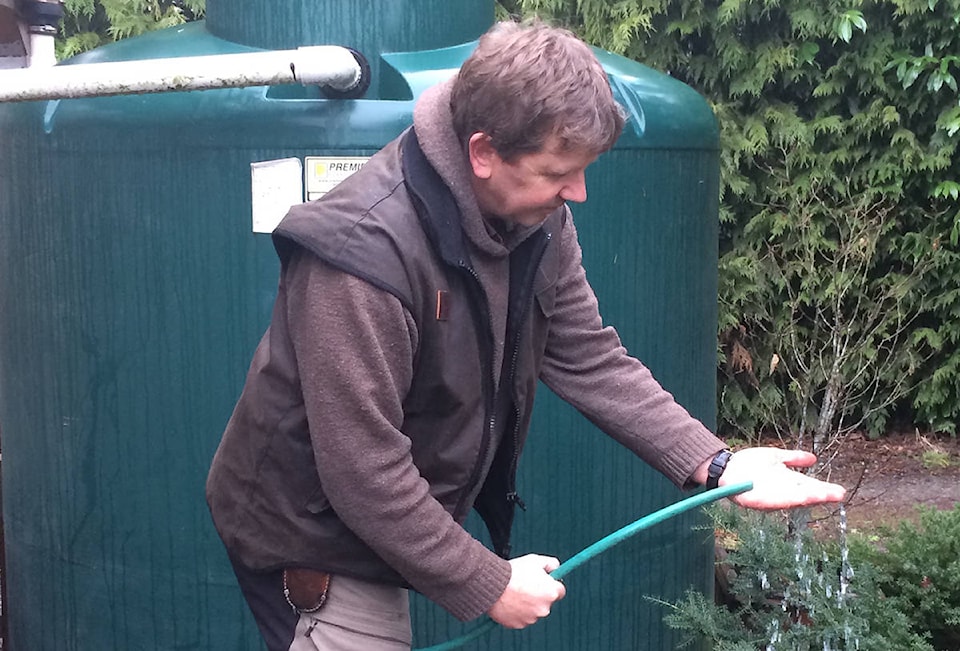Cowichan’s Capture the Rain Campaign
The Cowichan Watershed Board is sharing this series of profiles on landowners in our region who are doing their part to prepare for Cowichan’s changing climate by capturing rain. From small cisterns to large irrigation ponds, each is collecting rainwater to supplement their garden or farm needs in the face of increasing summer droughts. More info at www.cowichanwaterchallenge.ca
Rain Harvester: Gordon Mackay
Technique(s): above ground cisterns and rain barrel
Who is he:
Arborist and beekeeper, Gordon Mackay is a small business owner and teaches arboriculture at the Pacific Horticulture College, as well as teaching the EARTH Gardening Program at Camosun College. In his horticultural work Gordon sees the changes in our region, hotter summers, and drier soil, and is concerned about adequate water for his bees and plants.
Why he collects rainwater:
The water from Gordon’s well has a pH of 8.2, which is too alkaline for the unique alpine plants he cultivates. He knew that rainwater has a pH of about 6, so he needed a lot of rainwater for his large greenhouse of unusual alpine species.
Another reason for rain catchment was that Gordon was not intending to install perimeter drains around this new greenhouse, and even with the generous overhang of the roof, he still wanted to avoid water getting close to the concrete foundation. “My experience with perimeter drains has not been great. Once tree roots enter the drains they are far less efficient. And, it just seemed a tremendous waste to let all the water off the roof just go to waste.”
How he collects rainwater:
A lot of research was done before committing to a collection system. Gordon worked with a local contractor with a lot of experience in rain catchment systems to ensure the installation was done correctly. The resulting system is comprised of two above ground cisterns: a 1,000-gallon tank and a 400-gallon tank, both of which collect and filter the rain from approximately 1,600 square feet of greenhouse roof. The overflow for the tanks goes into a French drain that carries this water into a 10’x10’x6’ rock pit, 15 feet away from the greenhouse.
In addition, Gordon also uses a rain barrel to collect rain from his carport roof. This water irrigates a small garden along the side of the house.
Results?
The rain catchment system addressed two problems: providing a better quality water for his alpine plants, and avoiding the installation of perimeter drains around his greenhouse — a cost savings of about $8,000. Gordon instead collects and directs the excess water on his property to where it’s needed.
Maintenance is simple — inflow filters are rinsed of tree debris several times a month.
Words of Water Wisdom
Gordon recommends you do your research and get the correct size tanks for your needs, and don’t skimp on tank quality. As well he advises, “Don’t feel you have to collect it all, if you use smaller tanks then at least you’re capturing something and still making a difference. Start small and seek good advice.”
